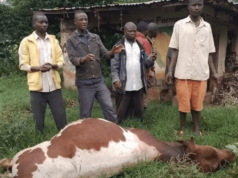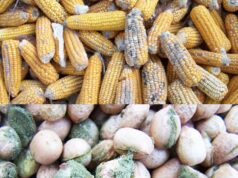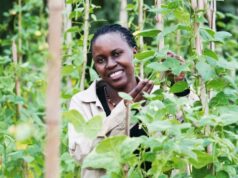By Lilian Ntege
Gonja, commonly known as East African Highland Banana or Plantain, is widely grown and consumed in Uganda.
It also has good local market demand, especially in urban areas where roasted gonja is a popular snack. If you travel long distances around the country, you will most likely find gonja as a roadside snack.
The produce is sold in local markets, roadside stalls, and in some supermarkets.
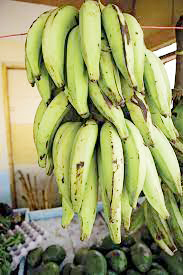
Conditions & planting
Gonja thrives in tropical regions with temperatures ranging from 20°C to 35°C. Adequate rainfall of about 1000-2000 mm per annum is essential for optimal growth.
Gonja thrives in fertile, well-draining soils’ Loamy or sandy loam soils rich in organic matter, with a pH level of about 5.5 are ideal.
While planting, land should be cleared of all shrubs, trees, and weeds. The soil can be ploughed and harrowed to enhance its structure and aeration.
Some farmers might create ridges or mounds for better water management.
As done with other banana species, gonja is propagated using suckers – shoots emerging from the base of mature plants.
Suckers are typically planted about three meters apart in rows, with about three meters between rows to ensure each plant gets adequate sunlight and airflow.
Jannet Kuteesa, a gonja farmer in Luweero district says gonja is well managed by weeding; regular removal of other unwanted plants and shrubs.
This is essential since they compete with the plant for nutrients.
Also, one can consider mulching which helps in conserving soil moisture, suppressing weeds, and enhancing soil fertility.
It should be noted that the plant can also be watered because it requires consistent moisture. Irrigation might be needed in dry periods.
Kuteesa advises that regular monitoring and treatment are crucial because the plant also faces threats from pests like banana weevils and diseases like banana bacterial wilt.
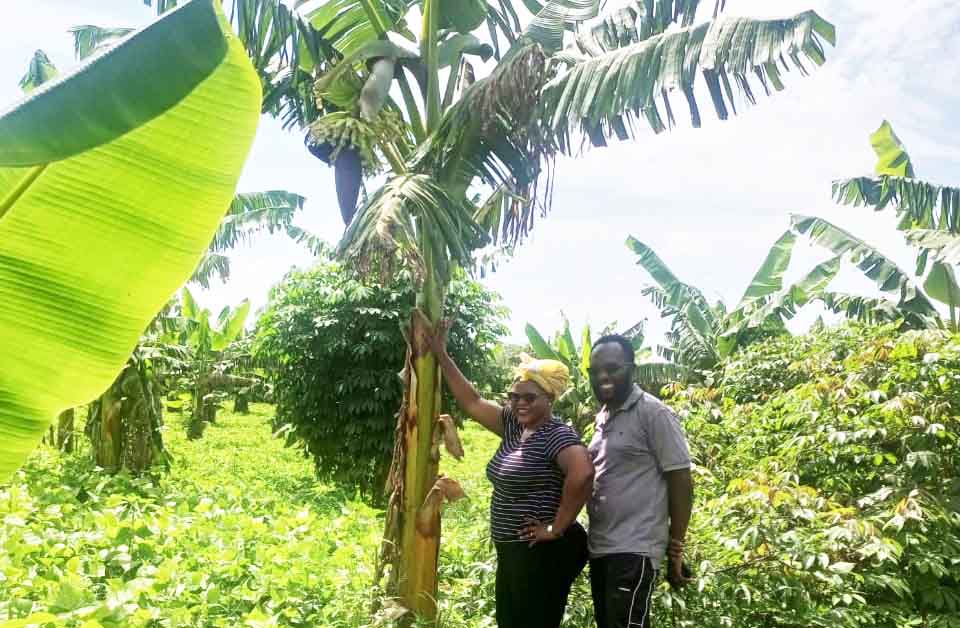
Kuteesa’s experience
She is a social worker by training and a proud gonja farmer by choice.
After acquiring their land, Kuteesa and her husband embarked on a careful process of clearing it by removing thorns, weeds and obstacles- preparing it for the upcoming planting season, which was April 2022.
The couple went the extra mile by engaging in soil testing to understand its nutrient composition better.
“Mr Isabirye from the Kawanda Research Center became our saviour, providing us with over 200 suckers to begin our venture,” Kuteesa says.
She says the commencement was not without its challenges.
“Eight months in, we noticed the suckers’ slow growth and then got a remedy; Grainpulse NPK banana fertilizer was recommended,” she says.
This boosted their growth, most especially during the rainy season.
She reflects on the diligence with which she undertook every advice she got; from maintaining a clean circle around each plant, to mulching and occasionally enriching the soil with cow dung in order to increase the soil fertility.
Intercropping
Meanwhile, farming gonja is not just about the plant itself. There is more beauty in this form of agriculture.
According to Kuteesa, the farmer has the ability to intercrop it with beans, peas and other vegetables.
However, she warns that it is never good with maize or Irish potatoes because the competition for nutrients can be dangerous.
One might wonder, why choose gonja, but for Kuteesa, the answer is simple: “I adore gonja. Whether it’s roasted, steamed, or deep-fried, its versatility is unmatched,” she says.
Kuteesa further notes that gonja is a rare plant and most farmers hesitate to grow it because of the long yielding period and the need for exclusive land separate from matooke.
However, she says the bright side is: “The satisfaction of doing what we love, the potential financial benefits, and providing employment are all worth it”.
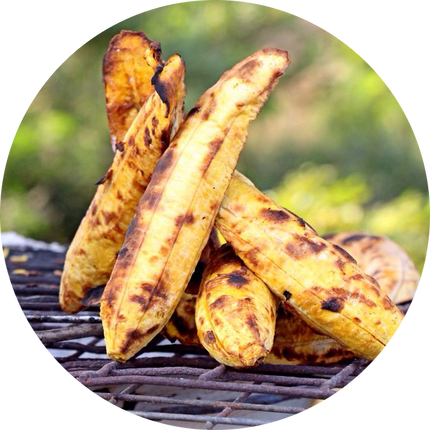
Prices
On the market dynamics, Kuteesa is optimistic as a cluster goes for between Shs 7,000 and 8,000. With a bunch having about six clusters, she says the returns are so promising.
Just like bananas, the price of gonja can vary based on production seasons and demand.
Through the highs and lows, Kuteesa remains steadfast, nurturing her gonja plants, and in turn, they bring joy and fulfillment to her life.
Gonja is typically ready for harvest in 10-12 months. It is mainly consumed roasted, but can also be boiled, fried, or even steamed.
It can be processed into various products such as crisps or flour, providing better returns.
















